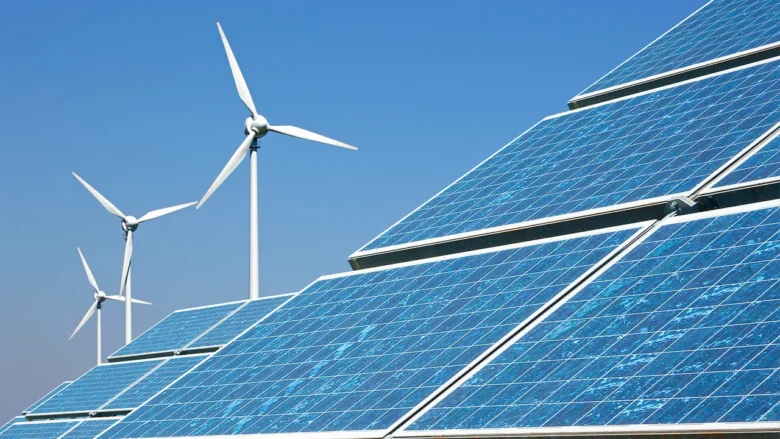The renewable energy sector is experiencing unprecedented transformation, driven by breakthrough technologies that promise to reshape how we generate, store, and consume clean energy. From revolutionary solar panels that work in low-light conditions to floating wind turbines that harness offshore winds, these innovations are not just incremental improvements—they’re fundamental shifts that could accelerate our transition to a sustainable energy future. Understanding these emerging technologies is crucial for anyone interested in the future of energy, whether you’re an investor, policymaker, or simply someone who cares about environmental sustainability. This comprehensive look at the most promising renewable energy innovations will help you grasp the magnitude of change happening right now and what it means for our energy landscape.
Advancements in Solar Technology
Solar technology has evolved far beyond the traditional silicon panels that dominated rooftops for decades. Perovskite solar cells represent one of the most exciting developments, offering the potential for significantly higher efficiency rates at lower costs. These cells can be manufactured using simple printing techniques and work effectively even in low-light conditions, making solar power viable in regions previously considered unsuitable for large-scale solar installations. Perovskite materials’ flexibility unlocks previously unexplored applications, including transparent solar windows that generate electricity.
Floating solar farms, or “floatovoltaics,” are revolutionizing how we think about solar installation space. These systems, deployed on reservoirs, lakes, and other water bodies, not only generate clean electricity but also reduce water evaporation and algae growth. Countries like Japan and China have already deployed massive floating solar installations, with some projects exceeding 100 megawatts in capacity. The cooling effect of water on the panels actually increases their efficiency compared to land-based installations, while the reduced land requirements make these systems particularly valuable in densely populated areas.
Wind Energy Innovations
Wind energy technology is experiencing a renaissance through innovations that address traditional limitations and unlock new possibilities. Vertical axis wind turbines (VAWTs) are making wind power accessible in urban environments where traditional horizontal turbines would be impractical. These turbines can operate effectively in turbulent wind conditions and produce less noise, making them suitable for integration into city landscapes. Advanced designs now incorporate magnetic levitation systems that reduce friction and maintenance requirements while increasing energy output.
Offshore wind technology is advancing by developing floating turbine platforms that can reach deeper waters with stronger and more consistent winds. These platforms, anchored with advanced mooring systems, can operate in waters too deep for traditional fixed-bottom turbines. The development of larger, more efficient turbine designs specifically for offshore use is creating opportunities to harness wind resources that were previously inaccessible. Some of these new offshore turbines have rotor diameters exceeding 200 meters, capable of generating enough electricity to power thousands of homes.
Developments in Energy Storage
Energy storage innovations are solving renewable energy’s biggest challenge: intermittency. Solid-state batteries represent a major leap forward, offering higher energy density, improved safety, and longer lifespans compared to traditional lithium-ion batteries. These batteries eliminate the liquid electrolyte that can cause fires and degradation in conventional batteries, making them ideal for large-scale energy storage applications. The technology promises to make renewable energy storage more reliable and cost-effective, addressing one of the primary obstacles to widespread renewable adoption.
Liquid air energy storage (LAES) systems are emerging as a promising solution for large-scale, long-duration energy storage. These systems use excess renewable energy to cool and compress air into liquid form, then release the stored energy by allowing the liquid air to warm and expand, driving turbines to generate electricity. The technology can store energy for weeks or months without significant losses, making it ideal for seasonal energy storage needs. Unlike batteries, LAES systems don’t rely on rare earth materials and can be scaled up to store massive amounts of energy.
Innovations in Geothermal Energy
Geothermal energy is experiencing a technological revolution that’s expanding its potential far beyond traditional volcanic regions. Enhanced geothermal systems (EGS) use advanced drilling techniques and hydraulic fracturing to create artificial geothermal reservoirs in areas that lack natural hot springs or steam vents. These systems can potentially access the vast heat resources that exist beneath the earth’s surface almost everywhere, dramatically expanding the geographic potential for geothermal energy production.
Closed-loop geothermal systems represent another breakthrough that eliminates many environmental concerns associated with traditional geothermal power. These systems circulate a working fluid through sealed pipes deep underground, capturing earth’s heat without extracting any groundwater or creating the seismic risks associated with traditional geothermal operations. The closed-loop approach makes geothermal energy viable in many more locations while addressing environmental and regulatory concerns that have limited geothermal development.
Progress in Hydropower
Hydropower technology is evolving beyond massive dams to embrace smaller, more environmentally friendly approaches. Run-of-river hydropower systems generate electricity from flowing water without creating large reservoirs, significantly reducing environmental impact while still providing reliable renewable energy. These systems can be deployed in smaller rivers and streams, making hydropower accessible to communities that couldn’t support large-scale dam projects. Advanced turbine designs optimized for low-head applications are making these systems increasingly efficient and cost-effective.
Underwater turbines are opening new frontiers in hydropower by harnessing ocean and river currents without the need for dams or significant environmental disruption. These turbines, designed to operate submerged in flowing water, can generate electricity from tidal movements, ocean currents, and river flows. The predictable nature of tidal patterns makes these systems particularly attractive for providing consistent renewable energy, while their underwater placement minimizes visual and environmental impact.
The Future of Renewable Energy is Now
The renewable energy innovations emerging today are not just incremental improvements—they represent fundamental shifts that will reshape our energy landscape. These technologies are addressing the core challenges that have limited renewable energy adoption: intermittency, storage, efficiency, and cost. From perovskite solar cells that work in low light to gravity storage systems that can hold energy for months, these innovations are creating a future where clean energy is not just competitive with fossil fuels but superior in many applications.
The convergence of these technologies creates synergies that amplify their individual benefits. Smart grid systems can optimize the integration of multiple renewable sources, while advanced energy storage ensures a reliable power supply regardless of weather conditions. The democratization of energy production through distributed technologies like floating solar and small-scale wind systems is creating opportunities for communities to achieve energy independence while contributing to global sustainability goals.
FAQs
1. What makes these renewable technologies “game-changing”?
These technologies address fundamental limitations of traditional renewable energy systems, such as intermittency, geographic constraints, and storage challenges. They significantly expand where and how renewable energy can be deployed while improving efficiency and reducing costs.
2. How soon will these innovations be commercially available?
Many of these technologies are already in various stages of commercial deployment, with some, like floating solar and offshore wind, scaling rapidly. Others, such as perovskite solar cells and airborne wind systems, are expected to reach commercial maturity within the next 5-10 years.
3. Are these new technologies affordable?
While initial costs may be higher, most of these innovations promise lower long-term costs through reduced maintenance, higher efficiency, and economies of scale. Many are designed specifically to reduce the overall cost of renewable energy.
4. What impact will these innovations have on the energy industry?
These technologies will likely accelerate the transition to renewable energy by making clean power more reliable, efficient, and accessible. They could fundamentally change how we generate, store, and distribute energy globally.
5. Which innovation has the most potential for widespread adoption?
Energy storage innovations, particularly advanced battery technologies and alternative storage methods, may have the greatest impact as they solve the intermittency challenge that affects all renewable energy sources.




